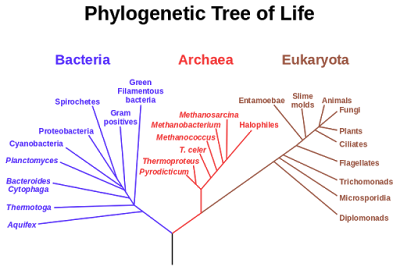A Confusion of Phylogenetic Trees
The hands at the Darwin Ranch are so busy making trees for science presentations, you'd might think it was continually Arbor Day down there. Besides, these trees are the written kind, and the only growing they do is in the minds of evolutionists. Some of them are a mite impressive.
These trees are based on evolutionary presuppositions and circular reasoning. In reality, they little value other than showing certain similarities.
When the evolutionary stories do not fit the facts, and additional information is discovered, the phylogenetic trees are pruned, grafted, and even made from scratch. If they had a creation-based approach, scientists would produce something more useful.
 |
| Speculatively rooted tree for rRNA genes. Image credit: Modified from NASA image by Eric Gaba |
When the evolutionary stories do not fit the facts, and additional information is discovered, the phylogenetic trees are pruned, grafted, and even made from scratch. If they had a creation-based approach, scientists would produce something more useful.
At the 75th annual meeting of the Society of Vertebrate Paleontology, held this year [2015] in downtown Dallas, the world's foremost fossil experts presented scores of research summaries. Researchers described extinct giant mammals from Argentina, one-of-a-kind bird fossils from China, and good-old North American classic dinosaurs. Amazingly, almost all of these fossil descriptions included phylogenetic (evolutionary) tree diagrams. Today's paleontologists show a religious-like devotion to fit their finds in an evolutionary tree. And with equally amazing regularity they describe problems with this process of constructing evolutionary trees. Are these problems significant enough to cast doubt on the whole exercise?To read the rest, click on "Can't See the Forest for the Trees".
